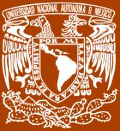Factors controlling the formation and oil-generating potential of the Middle Eocene organic-rich shales of Eastern Azerbaijan
Factores que controlan la formación y el potencial generador de petróleo de las lutitas ricas en materia orgánica del Eoceno Medio en el Este de Azerbaiyán
Orhan R. Abbasov1,*, Elnur E. Baloglanov1, Ulviyya J. Yolchuyeva2,3, Arastun I. Khuduzade4, Ruslan V. Akhundov1
1 Institute of Geology and Geophysics of the Ministry of Science and Education of the Republic of Azerbaijan, AZ1073, Baku, Azerbaijan.
2 Institute of Petrochemical Processes of the Ministry of Science and Education of the Republic of Azerbaijan, AZ1025, Baku, Azerbaijan.
3 Chemistry and Chemical Engineering Department, School of Science and Engineering, Khazar University, AZ1096, Baku, Azerbaijan.
4 Production Union Azneft of SOCAR, AZ1004, Baku, Azerbaijan.
* Corresponding author: (O.R. Abbasov) This email address is being protected from spambots. You need JavaScript enabled to view it.
How to cite this article:
Abbasov, O.R., Baloglanov E.E., Yolchuyeva U.J., Khuduzade A.I., Akhundov R.V., 2025, Factors controlling the formation and oilgenerating potential of the Middle Eocene organic-rich shales of Eastern Azerbaijan: Boletín de la Sociedad Geológica Mexicana, 77(1), A020724. http://dx.doi.org/10.18268/BSGM2025v77n1a020724
Manuscript received: May 27, 2024; Corrected manuscript received: June 25, 2024; Manuscript accepted: June 30, 2024.
ABSTRACT
The Maikop (Oligocene-Miocene) formation is considered the main and the deepest stratigraphic unit generating oil and gas in the South Caspian Basin. This study identifies factors that control the oil-generating potential of deeper sediments, Middle Eocene organic-rich oil shales. First of all, the patterns of distribution of Middle Eocene oil shale formation across geodynamic and tectonic zones were analyzed. Based on mineralogical and geochemical proxies, the parent rocks of samples taken from outcrop sections and mud volcanic ejecta have been studied, and the obtained results were correlated with Jurassic-Middle Eocene volcanism, established in the southeast of the Greater Caucasus and adjacent regions. The presence of organic-richer shales in the coastal areas of the Caspian Sea is explained by the relatively saline and deep conditions of the oligotrophic paleobasin, indicating a closer connection with the marine environment (influence of the Peri-Tethys). Referring to the results of extraction, 1H NMR, FTIR, thermogravimetric and pyrolytic analyses, the organic composition of oil shales was studied and their high oil productivity was revealed. Although most of the samples show immature thermal characteristics, the active oil-generating potential of some samples taken from mud volcanoes located near the coastal zones of the Caspian Sea was determined based on geological, mineralogical and organo-geochemical proxies. Besides the Caspian Sea, the samples from mud volcanoes of the Lower Kura basin also show satisfactory thermal maturity. We believe that the Middle Eocene shale source rocks made a greater contribution to the formation of the rich oil fields being developed in Azerbaijan than the Maikop deposits. Immature Middle Eocene oil shales occurring at depths of up to 4000 m onshore in East Azerbaijan are considered hybrid systems able to generate and accumulate shale oil.
Keywords: Eastern Azerbaijan, organic-rich shale, mineralogy, geochemistry, genesis, oil potential.

